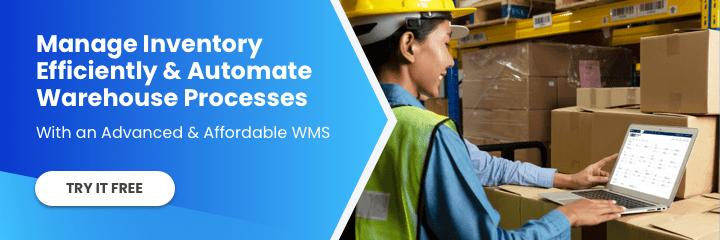Moving in any scenario is a cumbersome process—and often disliked. But for many businesses, moving can be a positive sign of growth and progress for a company. We at Cyzerg recently moved our office. After one year in Coral Gables, Florida, we decided it was time to seek an office space suitable for Cyzerg’s growth and “open door” company vision.
Click Here: Save Money On Your Technology Operations Through These IT Solutions
Our team has also helped many of our clients relocate over the years. We have found that a thoughtfully planned move can improve business communication, increase efficiency, and prevent future employee frustrations.
Our own move seemed the perfect time to share 10 key considerations for moving an office so the experience for your team—and clients—is seamless.
- First things first, think about the needs of your company and your clients when looking for an office space. Then look for a space that meets both needs. Is your new office near any major highways for easy and fast access? How will the move impact employees who commute? Our move put us closer to clients and key expressways, which simplified our employees’ commute and reduced our response time to clients.
- Plan for continued growth. A new office is useless if it cannot sustain your business’ growth. If your company outgrows an office before your lease expires, you risk breaking your lease and paying a fine. If you can, negotiate a right of first refusal on adjacent space. This gives you a first shot at leasing the space when it becomes available, potentially providing the room for you to grow. Based on our current rate of growth, Cyzerg’s new office will suit our needs for at least the next two years. At that point, we will need to take over adjacent space or find a new home.
- Embrace your team! Speak openly about your office options with team members. Show pictures and video of potential floor plans to staff to help lead to a unified decision, while honoring their likes/dislikes. For Cyzerg, it was this transparency that led to our open concept for collaboration with space for basketball and video games so the team can de-stress.
- Research city sales tax rates and compare their effect on customer savings and your bottom line. Customers look at sales tax when making large purchases, which is the case in IT procurement. Our sales tax in Miramar is 6%, while it was 7% in the Miami area. Six percent might not seem like a big number, but it results in a lot of savings for a customer making a $20,000 purchase. If your sales tax rate is even 1% less than a competitor’s because of your geography, your company has an automatic advantage over that competitor. Calculating sales tax rates was an important consideration for us when moving. Now, our clients benefit from a 1% discount because we are based in Miramar.
- Make sure all technology—servers, network switches, firewalls, computers and printers—are properly labeled before you disconnect them. Take pictures of the equipment when it is connected. If possible create a detailed diagram of their set-up. This will prevent confusion and frustration on move in day. If you have a semi-complex environment, we recommend contracting with a company to help you move your IT infrastructure. Make sure to coordinate with the IT company at least 45 days in advance.
- Check the network wires of the new office to make sure they are healthy and ready to support your systems. If it is a new office without network cables, you need to engage your IT company as soon as possible to start designing your wiring infrastructure. This step requires careful planning because new cabling can be very expensive (ranging between $100-$165 per drop/wire). If you are building a new office, you need to coordinate with the general contractor and electricians. Doing this will help you avoid additional expenses that can occur if cables do not run simultaneously with the work of the general contractor and electrician. Designing a cable layout will identify where you might need more or less wiring to provide coverage—even if you are a wireless office.
- Request Internet service for your new office at least 60 days before moving in. Many companies fail to do this ahead of time. In turn, their company’s productivity is often impacted by temporary Internet solutions that are not sufficient or stable for business operations. Once you request Internet, coordinate with your IT service company. With 60 days’ notice, your IT partner will have the lead time to re-assess your bandwidth requirements, help you find the best deal that meets your needs, and coordinate installment details with the ISP. This is also a great time to discuss your bandwidth needs and discuss switching providers if necessary. Even if you’re in a contract, the savings with a new ISP can outweigh the costs of breaking your existing contract.
- Coordinate with your vendors. If you are planning on moving in new furniture, it is important that you coordinate furniture placement with your IT team. If not, furniture can impede wiring for network cables and get in the way of wires’ access to employee workstations. Make sure the electrician, IT, low voltage team, and floor plan designers are all on the same page way before moving day. We recommend producing a detailed diagram and plan to ensure accuracy.
- Test your technology before your first day of work in the new office. Dedicate one day to testing. Make sure office phones can make internal and external calls and that servers, wireless networks, and Internet connectivity are functional. This step is essential to prevent workflow interruption when work begins. We conducted testing two weeks before opening in Miramar.
- Protect your assets. An ideal scenario in your new office would be to dedicate one space to installing all IT equipment, like servers, network switches, phone systems, firewalls, etc. All of your company’s private customer data and transactions reside in these systems. Your company relies on them to operate! Protect them in a computer room with restricted access or away from people with a small CCTV camera. Physical security of our systems while moving was important to us—not just for our business data, but for the security of our clients.

With our new office in Miramar, just north of Miami, we are geographically closer to clients and enjoying the fruits of our labor in a bright, spacious office. We have already seen morale, quality of life, and productivity increase among team members and have noted faster response times to clients.
To learn about warehouse technology trends, follow us on LinkedIn, YouTube, X, or Facebook. If you have other inquiries or suggestions, please contact us here. We’ll be happy to hear from you.












